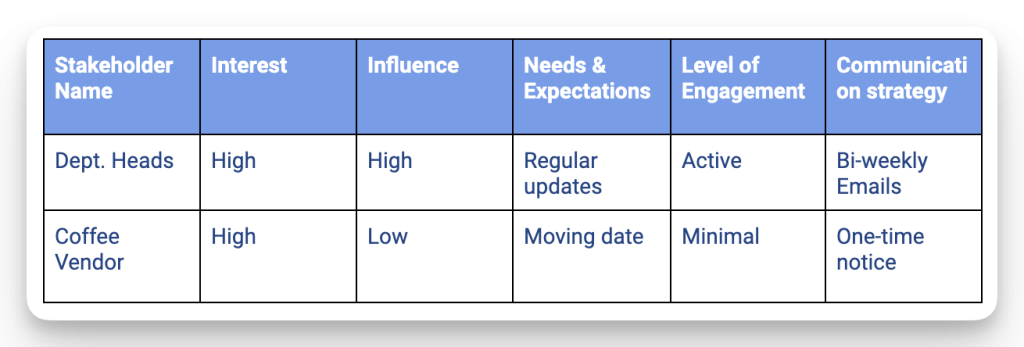
How to Create a Stakeholder Register: Comprehensive Guide & Best Practices
Have you ever planned a surprise party and forgotten to invite your best friend’s cousin’s roommate because, well, who remembers that? Or have you organised a work event and overlooked someone, resulting in a room full of glares? Oops! For those of us who constantly forget names, overlook faces, or generally get overwhelmed, I present to you… drumroll... the Stakeholder Register! 🥳
What’s a Stakeholder Register, you ask
It’s like a fancy VIP list for your project. Every VIP (or not-so-VIP) gets their name written down, so you never leave them out in the cold. Well, unless you want to (but that’s another story).
Step-by-step Guide to Creating a Stakeholder Register
The Stakeholder Register is the unsung hero of project management. It’s the backbone of communication, ensuring no stakeholder is left out. But how do you go about creating one? Let’s dive right in!
Identify Stakeholders
Jot down everyone who has a stake in your project.
Example: For an office relocation project, you’d list down department heads, employees, relocation company, facilities management, IT teams, and maybe even local authorities if permits are involved.
Determine Their Interest and Influence
Rank stakeholders based on their interest in and influence on the project.
Example: Department heads? High interest, high influence. The coffee vendor? High interest (he wants to ensure he’s moving too!), but low influence.
Define Their Needs and Expectations
Identify what each stakeholder expects from the project.
Example: IT teams need early notice for moving systems. Facilities management might need access plans.
Note Their Level of Engagement
Determine how involved they need to be.
Example: Department heads might need regular updates, while the coffee vendor just needs to know the moving date
Decide Communication Strategy
Plan how to keep each stakeholder informed.
Example: Bi-weekly email updates for the department heads, a one-time notice for the coffee vendor.
Review & Revise Regularly
Stakeholders lists are open to change.
Example: New team members join, some stakeholders leave, and others might just change hats.
Create the Register
Tabulate all this info for easy access and updates.
Template for Stakeholder Register:

Real-life Examples
Planning an Office Relocation
Objective: Shift office from Location A to Location B with minimum disruption to work.
Stakeholder Identification & Details
- Department Heads
- Interest: High – Need to ensure their teams face minimum downtime.
- Influence: High – They’ll decide the relocation schedule for their teams.
- Communication Strategy: Weekly meetings for updates and feedback.
- Employees
- Interest: High – Personal workspace and seamless relocation.
- Influence: Medium – Can provide insights on challenges faced during relocation.
- Communication Strategy: Periodic email updates and a Q&A session.
- Relocation Company
- Interest: High – It’s their job!
- Influence: High – They handle the actual moving logistics.
- Communication Strategy: Regular check-ins to ensure smooth progress.
… and so on for each stakeholder.

Launching a New Software
Objective: Develop and release software X to improve task Y.
Stakeholder Identification & Details:
- Development Team:
- Interest: High – They build the product.
- Influence: High – Code quality, features, and release timeline.
- Communication Strategy: Daily stand-up meetings.
… And similarly, details for QA testers, marketing teams, etc.
Stakeholder Register Sample for New Software Launch:

Designing a New Product Line
Objective: Design and release a new range of eco-friendly products.
Stakeholder Identification & Details:
- Design Team:
- Interest: High – They create the initial designs.
- Influence: High – Design quality, aesthetics, and functionality.
- Communication Strategy: Weekly brainstorming sessions.
… And likewise for manufacturing units, suppliers, etc.
Stakeholder Register Sample for New Product Line Design:

In essence, creating a stakeholder register is like sketching a roadmap of everyone important to your project’s journey. Knowing their roles, interests, and influence can determine the route you’ll take, ensuring a smoother journey to your project’s success! 🚀
Conclusion
So, there you have it! The nifty Stakeholder Register – your saviour from oversight, forgetfulness, and potential disasters. Whether you’re launching rockets or just trying to decide the theme for your next potluck, stake your claim on organised planning with this tool.




